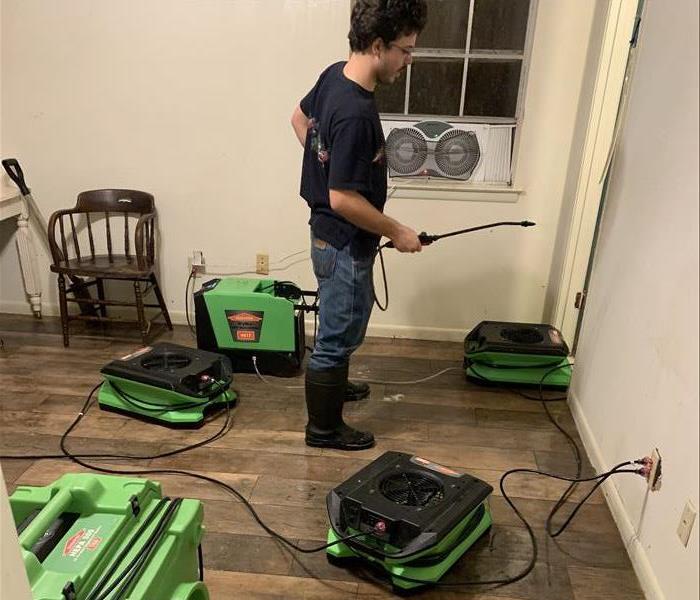Protecting Your Escambia County Property from Cold Weather Pipe Damage
1/20/2024 (Permalink)
As residents of Escambia County, we enjoy a relatively mild climate. However, that doesn't mean we're immune to occasional cold snaps during the winter months. When temperatures drop unexpectedly, our properties become susceptible to cold weather pipe damage. It's crucial to be prepared and know what to do to prevent and address this issue. Here's a guide from SERVPRO® on how to protect your property.
Understanding Cold Weather Pipe Damage: Cold weather pipe damage occurs when water in pipes freezes and expands, causing the pipes to burst. This can lead to significant water damage inside your home or business. While we may not experience the extreme cold seen in other regions, even a brief drop in temperature can pose a risk.
Preventive Measures:
Insulate Your Pipes: Insulation is your first line of defense. Make sure all exposed pipes, especially those in unheated areas like basements, attics, and crawl spaces, are properly insulated.
Seal Gaps and Cracks: Seal any gaps or cracks in your property's walls, foundation, or around pipes where cold air could enter. This will help maintain a consistent temperature indoors.
Disconnect Hoses: Before cold weather arrives, disconnect and drain garden hoses. Leaving hoses attached can trap water, leading to pipe damage.
Drip Your Faucets: When temperatures drop significantly, let faucets drip slowly. The continuous flow of water can prevent freezing by relieving pressure in the pipes.
Keep Interior Doors Open: Keep interior doors open to encourage warm air circulation throughout your property, especially in areas with plumbing.
What to Do If You Suspect Frozen Pipes:
Turn Off Water Supply: If you suspect frozen pipes, turn off the water supply to your property immediately. This will help prevent further damage when the pipes thaw.
Thaw Pipes Safely: Use a heat source like a hair dryer or heat lamp to thaw frozen pipes gently. Avoid open flames or excessive heat, as they can damage the pipes.
Call a Professional: If you're unsure how to thaw pipes or if a pipe has burst, it's best to call a professional plumber. They can assess the situation and make necessary repairs.
Water Damage Mitigation: If you do experience pipe damage and water leaks into your property, it's essential to take swift action:
Shut Off the Water: Turn off the main water supply to prevent further flooding.
Call SERVPRO®: Contact our experienced team at SERVPRO of [Your Location]. We specialize in water damage restoration and can quickly respond to mitigate the damage.
Document the Damage: Take photos or videos of the affected areas for insurance purposes.
Begin Cleanup: Remove excess water using towels or a wet/dry vacuum. Ensure proper ventilation to help dry the area.
Remember that even in our relatively mild climate, cold weather pipe damage can occur. Being prepared and knowing how to prevent and address frozen pipes can save you time, money, and stress. If you ever face water damage issues, don't hesitate to call SERVPRO for professional assistance in restoring your property.




 24/7 Emergency Service
24/7 Emergency Service
